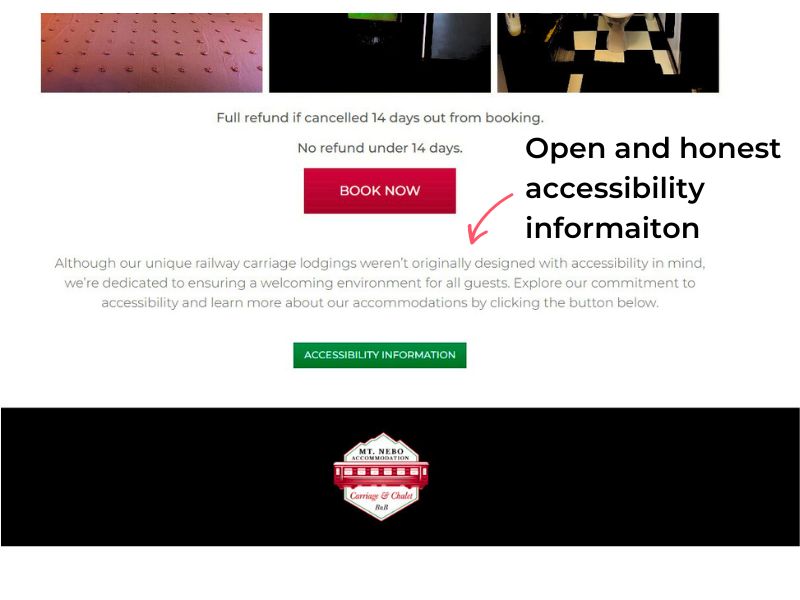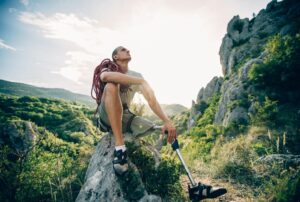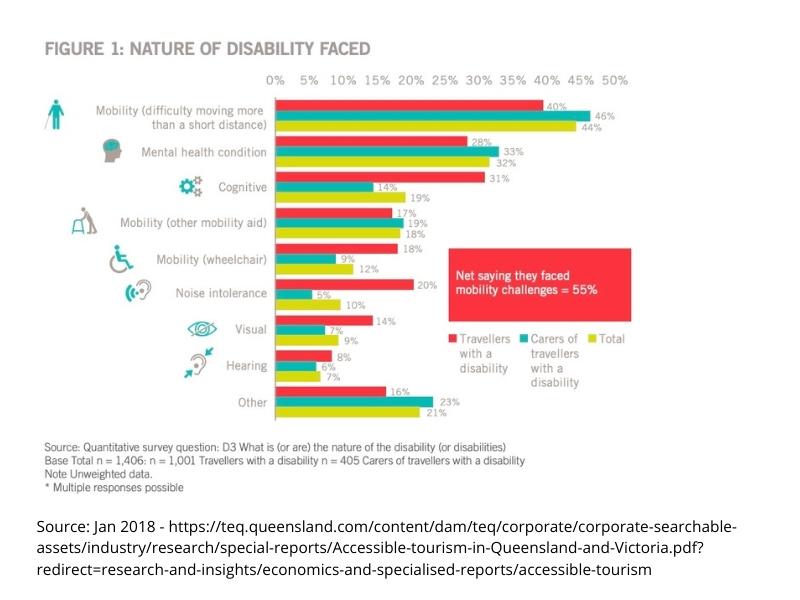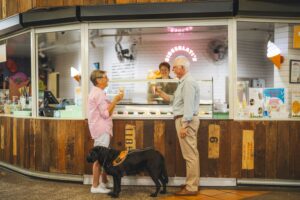Introduction to accessibility
While it might not be possible to make all of your offerings accessible to all, providing adequate information to allow individuals to make informed decisions based on their needs already goes a long way towards making your offerings accessible. This is so important that we’re going to say it again! It is so important to share information about how accessible your services are, even if some parts might not be accessible to everyone. Being open about what you can and cannot offer helps build trust with people looking to visit. It shows you care about making everyone feel welcome and are looking into making things better. By telling visitors clearly about your tourism offering’s accessibility, they can decide if it’s the right fit for them. Plus, it points out where you can improve to make your services more inclusive. Making sure everyone can enjoy travel experiences starts with being clear and honest.
If you are new to Accessibility, we recommend you first watch the Accessibility webinar recording below.
Accessibility Quick Win Webinar
Tourism Australia describes accessible tourism as the ongoing endeavour to ensure tourist destinations, products and services are accessible to all people, regardless of their physical limitations, disabilities or age.
The image below is a good example of a business that, while not being fully accessible to all, have included the information necessary for those with a disability to make an informed decision.

Cérge is a great Australian based service for tourism operators and people with disabilities alike that you may like it look into. It is a communications platform for individuals with disability to receive personalised customer service from businesses they trust, removing the guesswork and allowing your staff to provide excellent customer service to people with disabilities.
Why should you care?
About 18% of the Australian population are living with a disability and another 10% care for people with a disability.

There is a sizeable, growing and diverse range of travellers with accessibility needs (research by Tourism Research Australia, 2018):
- 84% of travellers with a disability or their carers have taken an overnight trip of least 40 kilometres from home.
- Around one in every four have also taken overnight trips closer to home.
- Approximately three quarters of those with a disability travel – more say they would like to if the products or technologies existed to enable/support their travel.
The Queensland Government felt that accessibility was such an important topic that they made 2023-2024 the Year of Accessible Tourism. The Queensland Government have created a range of useful resources for making tourism more accessible. Free training modules are also available through Quality Tourism Australia.
While mobility is the most common type of disability identified by this study, many other types of disabilities can pose challenges to travellers, and many people face multiple challenges with a high rate of overlap between mental, cognitive and physical conditions.

Travellers with a disability often have difficulty accessing cafés, restaurants, activities, resorts and accommodation and need to plan many details of their trips well in advance to ensure a smooth experience. From the specific dimensions of doorways to the availability of toileting areas for service animals to understanding exactly how a meal is prepared there are many tiny little extra bits of information that you can include on your website and social media accounts that, if provided, will hugely simplify a potential visitor’s planning process and ultimately may make the difference between them choosing your business or a competitors.


The aim of adding accessibility information to your digital assets
As a tourism operator your aim should be to provide a welcoming and navigable experience for all potential visitors, regardless of their abilities or disabilities. You can do this by:
- Enhancing visibility: Making information about accessibility features readily available and easily discoverable on websites, social media, and Google Business Profiles helps individuals with disabilities plan their visits more effectively.
- Promoting inclusivity: Demonstrating a commitment to inclusivity by highlighting accessible services and accommodations fosters a welcoming environment for people with various needs.
- Improving user experience: Implementing accessibility guidelines for digital content ensures that all users, including those using assistive technologies like screen readers, can navigate and interact with your digital assets seamlessly.
- Complying with the law with regards to accessibility
Ultimately, the aim is to create a digital presence that is as welcoming and accessible as the physical premises, ensuring all potential visitors have the information they need to make informed decisions about their travel plans. Vacay It have created a great blog, Quick Guide to Accessibility for Tourism Operators, that gives insight into the laws for accessibility in Australia along with some great info and links to other resources.
Unexpected bonuses when you add accessibility information to your digital assets
- Building trust and loyalty: Transparently sharing accessibility information builds trust with potential visitors, showing that their needs have been considered and addressed, can encourage repeat visits and positive word-of-mouth.
- Expanding market reach: By accommodating a broader audience, including people with disabilities, families with young children, and older adults, tourism operators can tap into new market segments and drive increased business.
- Improving your search engine optimisation (SEO): Many best practice rules for accessibility are also considered best practice for SEO. So, make your website more accessible and you will also improve your rankings on Google and other search engines! These best practice tips will be outlined in more detail further along in the course, but one simple example is adding alt-text to your images – it helps both people with vision impairments and Google to better understand the content of your page.
Where should I add accessibility information?
Accessibility information should be included:
- on your website
- within your social media posts
- on your Google Business Profile
- within email communication
Be sure to link to your FAQs relevant section for more information.
Media release template
When you are done this course and have updated your website and social media to be accessible, use the story builder media release template to create a media release.
The focus should be on your new accessibility page, this product is part of region ‘x’, complements the offer of ‘abc’.
So without further ado, lets get into it!
